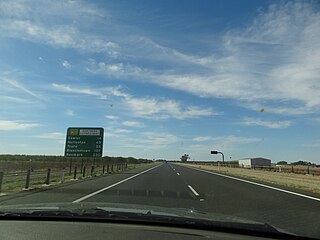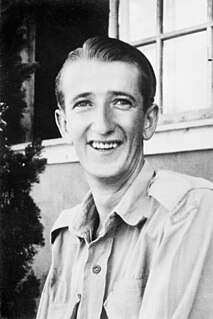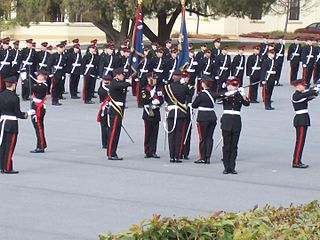
The Battle of Kapyong, also known as the Battle of Jiaping, was fought during the Korean War between United Nations Command (UN) forces—primarily Canadian, Australian, and New Zealand—and the Chinese People's Volunteer Army (PVA). The fighting occurred during the Chinese Spring Offensive and saw the 27th British Commonwealth Brigade establish blocking positions in the Kapyong Valley, on a key route south to the capital, Seoul. The two forward battalions—the 3rd Battalion, Royal Australian Regiment and 2nd Battalion, Princess Patricia's Canadian Light Infantry —were supported by guns from the 16th Field Regiment of the Royal Regiment of New Zealand Artillery along with a company of US mortars and fifteen Sherman tanks. These forces occupied positions astride the valley and hastily developed defences. As thousands of soldiers from the Republic of Korea Army (ROK) began to withdraw through the valley, the PVA infiltrated the brigade position under the cover of darkness, and assaulted the Australians on Hill 504 during the evening and into the following day.

Gapyeong County is a county in Gyeonggi Province, South Korea. It was the scene of the Battle of Kapyong, a major battle of the Korean War.

The Royal Australian Regiment (RAR) is the parent administrative regiment for regular infantry battalions of the Australian Army and is the senior infantry regiment of the Royal Australian Infantry Corps. It was originally formed in 1948 as a three battalion regiment; however, since then its size has fluctuated as battalions have been raised, amalgamated or disbanded in accordance with the Australian government's strategic requirements. Currently, the regiment consists of seven battalions and has fulfilled various roles including those of light, parachute, motorised and mechanised infantry. Throughout its existence, units of the Royal Australian Regiment have deployed on operations in Japan, Korea, Malaya, Borneo, Vietnam, Somalia, Rwanda, Cambodia, East Timor, the Solomon Islands, Iraq and Afghanistan.

A battle honour is an award of a right by a government or sovereign to a military unit to emblazon the name of a battle or operation on its flags ("colours"), uniforms or other accessories where ornamentation is possible.

The 3rd Battalion, The Royal Australian Regiment is a mechanised infantry battalion of the Australian Army, based in Kapyong Lines, Townsville as part of the 3rd Brigade. 3 RAR traces its lineage to 1945 and has seen operational service in Japan, Korea, Malaya, Borneo, South Vietnam, Rifle Company Butterworth, East Timor, the Solomon Islands, Afghanistan and Iraq.

Reginald Walter Saunders, MBE was the first Aboriginal Australian to be commissioned as an officer in the Australian Army. He came from a military family, his forebears having served in the Boer War and the First World War. Enlisting as a soldier in 1940, he saw action during the Second World War in North Africa, Greece and Crete, before being commissioned as a lieutenant and serving as a platoon commander in New Guinea during 1944–1945. His younger brother Harry also joined the Army, and was killed in 1942 during the Kokoda Track campaign.

Northern Expressway, also known as the Fatchen Northern Expressway, is a 21 kilometre long controlled-access highway in Adelaide, South Australia. Since March 2020, the North–South Motorway continues west of Port Wakefield Highway and intersects the Port River Expressway to reach the harbour at Port Adelaide. These are the northernmost two parts of the North–South Corridor.

The 27th Infantry Brigade was an infantry brigade of the British Army that saw service in the First World War, the Second World War, and the Korean War. In Korea, the brigade was known as 27th British Commonwealth Brigade due to the addition of Canadian, Australian, New Zealand and Indian units.

Horace William Madden, GC, also known as Bill Madden, was a soldier in the Australian Army who was a posthumous recipient of the George Cross for his conduct while a prisoner of war during the Korean War.

The involvement of New Zealand in the Korean War began in 1950 as a response to the United Nations Security Council's call for combat assistance in the erupting Korean War. New Zealand was one of the first nations to respond with support.
Simon MacKenzie is a military historian, author and academic. He was educated at the University of Toronto and received a DPhil from the University of Oxford in 1989.

Australia entered the Korean War on 28 September 1950, following the invasion of South Korea by North Korea. The war's origins began in the context of Japan's defeat in World War II which heralded the end to 35 years of Japanese occupation of the Korean Peninsula. The surrender of Japan to the Allied forces on 2 September 1945 led to the division of Korea into two countries, which were officially called the Democratic People's Republic of Korea (DPRK) and the Republic of Korea (ROK), with the DPRK was occupied by the Soviet Union, and the ROK, below the 38th Parallel, was occupied by the United States (US).
The Canadian Army Veteran Motorcycle Units is a riding club, or more precisely an organized association of military veteran motorcycle riders.
The 25th Canadian Infantry Brigade was Canada's primary combat-formation intending to be sent as part of the British Commonwealth Forces Korea. Originally composed of three infantry battalions and two armoured squadrons, several individual units rotated through the brigade. Although a full brigade had been trained and armed by 1951, the success of the Inchon Landing meant that only 2nd Battalion, Princess Patricia's Canadian Light Infantry (2PPCLI) was initially sent. However, Chinese and North Korean forces subjected Canadian forces to fierce fighting throughout April 1951. 2PPCLI earned a Presidential Unit Citation for their actions during the Battle of Kapyong while serving with the 27th British Commonwealth Brigade. It had detached from the 25th Brigade in order to leave for Korea in advance of the formation, and would later rejoin its Canadian brigade group.

The Corps of Staff Cadets (CSC) is a corps of the Australian Army. It is ranked first in the Order of Precedence ahead of the Royal Australian Armoured Corps. The CSC is the corps to which all officer trainees, known as staff cadets, who attend the Royal Military College, Duntroon are allocated once they have completed their initial stage of training in III Class, known as Initial Cadet Training. Upon completion of this training, which lasts between six and eight weeks, the successful III Class cadets are welcomed into the Corps and presented with their Corps lanyard at what is known as the "Lanyard Parade". The name of the Corps of Staff Cadets is derived from the earliest history of the College, which was set up in 1911 to train officers to fill positions in the now defunct Staff Corps. Currently, however, following graduation, the cadet is promoted to the rank of lieutenant and allocated to a combat, combat support or combat service support corps, such as the Royal Australian Infantry Corps, Royal Australian Engineers, Royal Australian Armoured Corps, Royal Australian Corps of Transport, Royal Australian Artillery, etc.
Woodside Barracks is an Australian Army base located in Woodside in South Australia.
The Canadian Forces were involved in the 1950–1953 Korean War and its aftermath. 26,000 Canadians participated on the side of the United Nations, and Canada sent eight destroyers. Canadian aircraft provided transport, supply and logistics. 516 Canadians died, 312 of which were from combat. After the war, Canadian troops remained for three years as military observers.
The Korean War Memorial is located in Moore Park, Sydney, New South Wales, Australia. It is a tribute to the 17,000 Australian troops who served in the United Nations contingent during the Korean War. It was dedicated in 2009. It was declared a Military Memorial of National Significance on 23 April 2013.










